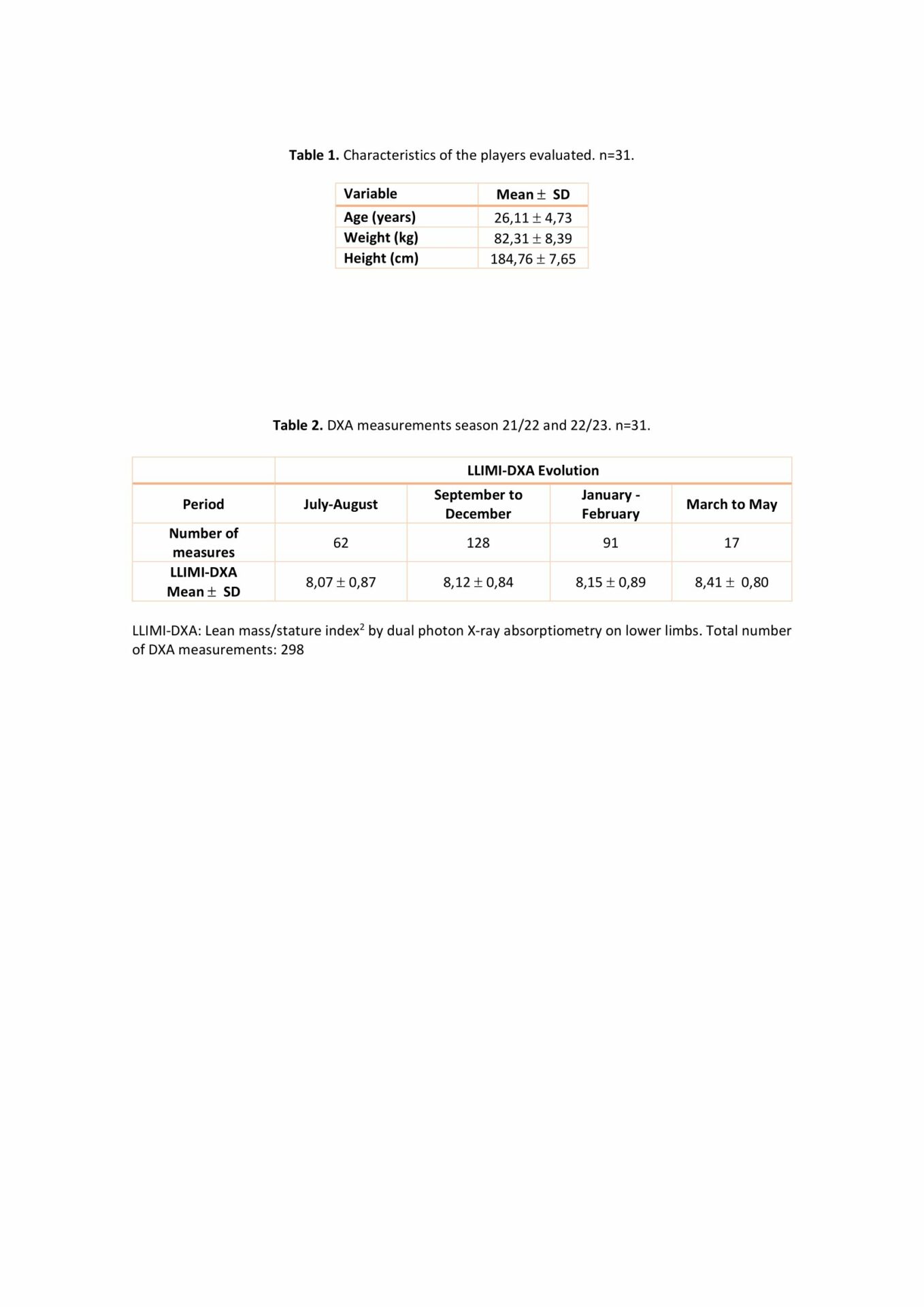Introduction
Currently, the somatotype of elite football players has become towards a greater mesomorphic and ectomorphic component1. In the UEFA Expert Group Statement2 research, the range of fat mass has been established by Dual Photon X-ray Absorptiometry (DXA) between 8 and 13%, but no reference values for lean mass have been calculated. At present, there is a lack of useful reference parameters for setting lean mass targets in lower limbs of professional football players3,4.
For this reason, the aim is to obtain lower limb lean mass reference ranges for this elite population.
Methods
The total sample consisted of 31 elite football players (Table 1), from the first team of Udinese Calcio (Italy).
Table 1. Characteristics of the players evaluated. n=31.
|
Variable |
Mean ± SD |
|
Age (years) |
26,11 ± 4,73 |
|
Weight (kg) |
82,31 ± 8,39 |
|
Height (cm) |
184,76 ± 7,65 |
Full body DXA analysis was performed with a GE Healthcare Lunar iDXA device during the competitive stage of the 21/22 and 22/23 seasons, gathering a total of 298 measurements. Injured players were excluded from the total sample.
Lower limb lean mass was assessed using the index: lower limb lean mass/height2 which we have named LLIMI-DXA.
This work was approved by the Ethics Committee of the Pablo de Olavide University.
Results
In our group we obtained mean reference values of the LLIMI-DXA index of 8.13 ± 0.86 kg/m2. Approximately 70% of the players are in the range (x±SD ) of 7.27-8.99 kg/m2. Approximately 96% of our players are in the range (x±2SD ) of 6.41-9.85 kg/m2. The evolution of this index during the 21/22 and 22/23 seasons is shown in table 2.
Table 2. DXA measurements season 21/22 and 22/23. n=31.
|
LLIMI-DXA Evolution |
||||
|
Period |
July-August |
September to December |
January – February |
March to May |
|
Number of measures |
62 |
128 |
91 |
17 |
|
LLIMI-DXA Mean ± SD |
8,07 ± 0,87 |
8,12 ± 0,84 |
8,15 ± 0,89 |
8,41 ± 0,80 |
LLIMI-DXA: Lean mass/stature index2 by dual photon X-ray absorptiometry on lower limbs. Total number of DXA measurements: 298
Conclusions
The LLIMI-DXA index has proved very useful in our elite football players for monitoring the evolution of the lean mass of the lower limbs during the season, so we consider this index to be very useful for analysis by the technical and health staff of a professional football club. Given that this is a novel index not evaluated in other teams, our data from the interval in which 70% of the players are found can serve as a reference for adequate values of this index, while the second interval can serve as a reference for a more exhaustive monitoring of muscle mass. However, it would be advisable for each club to obtain the average values of the LLIMI-DXA index in order to be able to compare and analyse their athletes.

